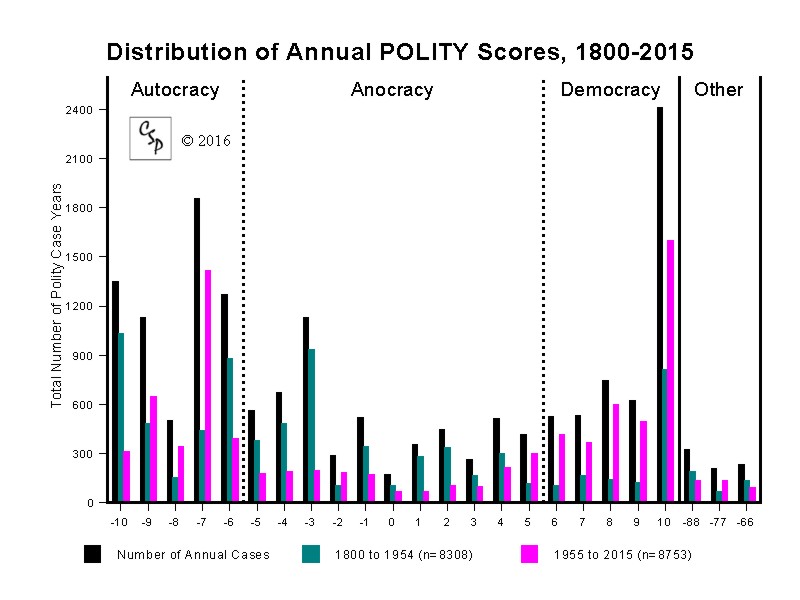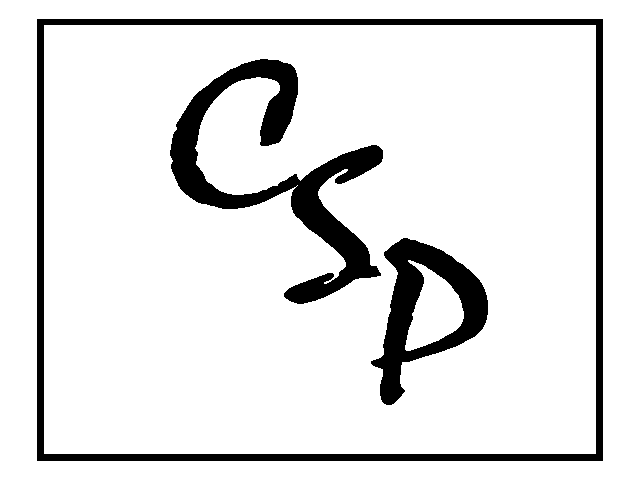|
|
|
This chart
displays the Distribution of Annual POLITY Scores in the annual
times-series version of the Polity IV dataset. The black bars display
the distribution for the entire data series, 1800-2015, and the color
bars show the distribution for the "classic Westphalian state-system"
(1800-1954) and the contemporary "global system of states" (1955-2015).
The most dramatic differences between the two periods, in addition to
the absence of local polities governing the colonial territories during
the classic period, are 1) the concentration of personalist and corporatist
(-7) autocracies in the contemporary period contrasting with the range
of monarchies and reformist monarchies that dominated the classic period
and 2) the (very recent) emergence of democratic polities in the contemporary
period. The "local polities governing the colonial territories"
during the classic period are subsumed by the imperial states in the
Westphalian state-system. Earlier versions of the Polity data series
included imcomplete information on these "local polities"
by including data on "self-governing territories." This hybrid
classification of "non-state" polities was almost invariably
coded as "partially democratic" by definition and, thus, imparted
a systematic bias to the data series. The Polity IV version includes
only independent, state polities in the data series. In addition, the
data series does not include "micro-states," that is, independent
states with total populations less than 500,000 in the most recent year.
The Polity IV data series covers 167 independent states in 2015 and
is updated annually.
|
Back to Polity Project Page

|
 |
Copyright 2008-2016

